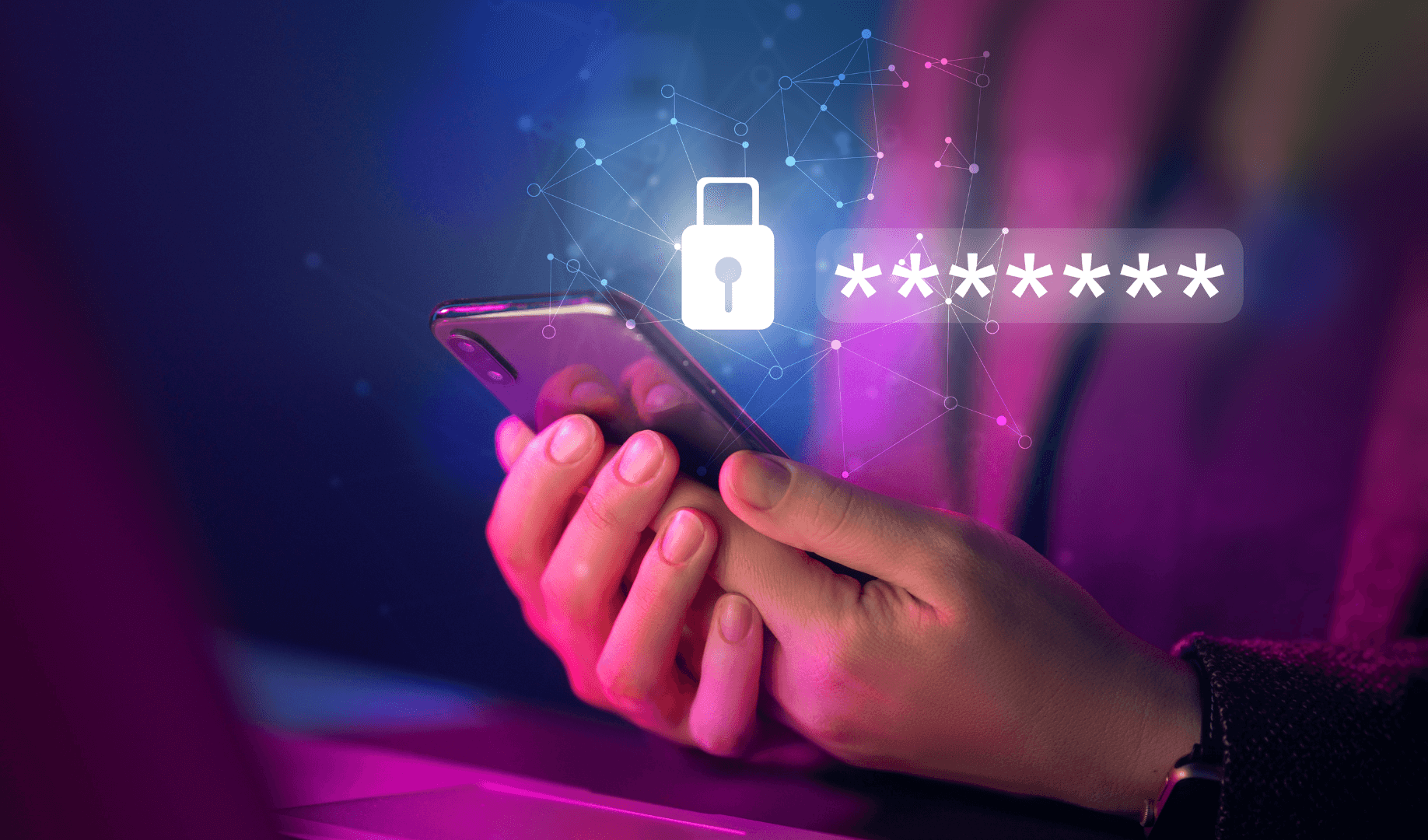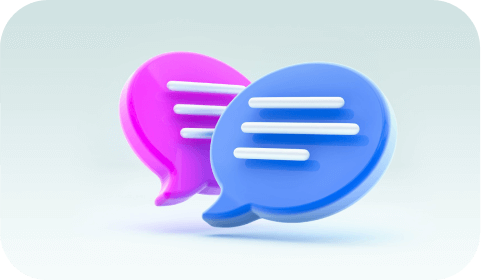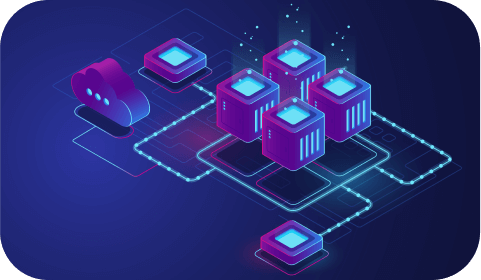Mobile App Development for Healthcare: Things To Know
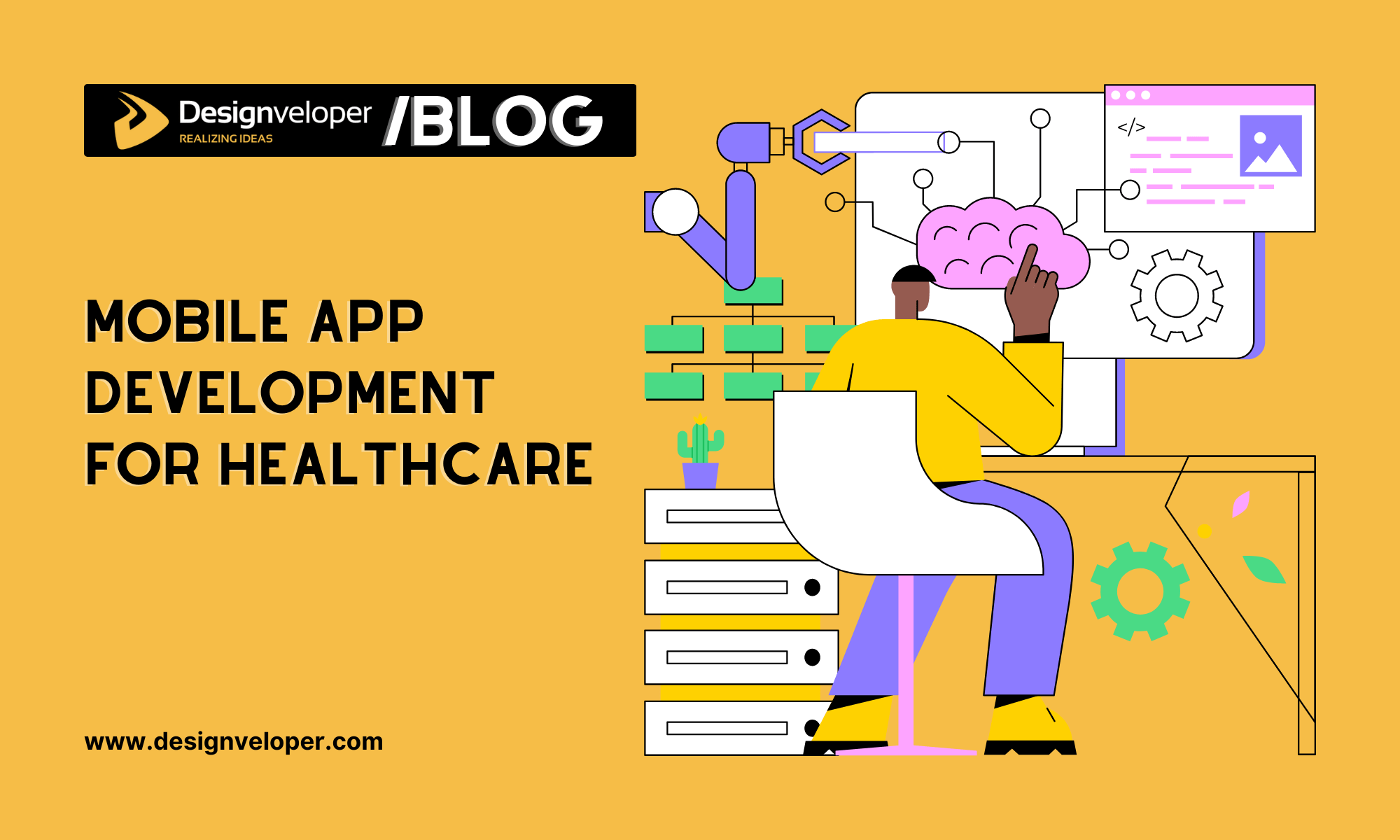
People are accessing healthcare in a vastly different way as a result of smartphones. Mobile apps are providing more convenient and personalized care by helping with appointments to managing chronic conditions, and making care data driven. This is a paradigm shift that healthcare startups can take advantage of to provide powerful new solutions that meet increasing demands of patients while unburdening the provider–pull model. In this changing landscape, mobile app development for healthcare is no longer just a trend. That’s a core strategy for bringing innovation to digital health.
This article breaks down what healthcare startups need to know before building their first app: from essential features and regulatory concerns to design tips and integration best practices. With the right foundation, your app could be the next tool patients and providers rely on daily.
An Overview of Mobile App Development for Healthcare
Healthcare mobile apps have become a mainstream tool for patients and providers around the world. There are now hundreds of thousands of health-related apps available – one recent report counted over 337,000 digital health apps globally. In the United States, about 43% of the population actively uses healthcare applications as of 2024. In some countries the adoption is even higher: in India roughly 69% of people use health apps (and about 61% in China). This surge is due to the promise of convenient, patient-centric services delivered via smartphone. The global mobile health (mHealth) app market is booming as a result – it was around $36–43 billion in value in 2024–2025 and is on track to multiply in the coming decade.
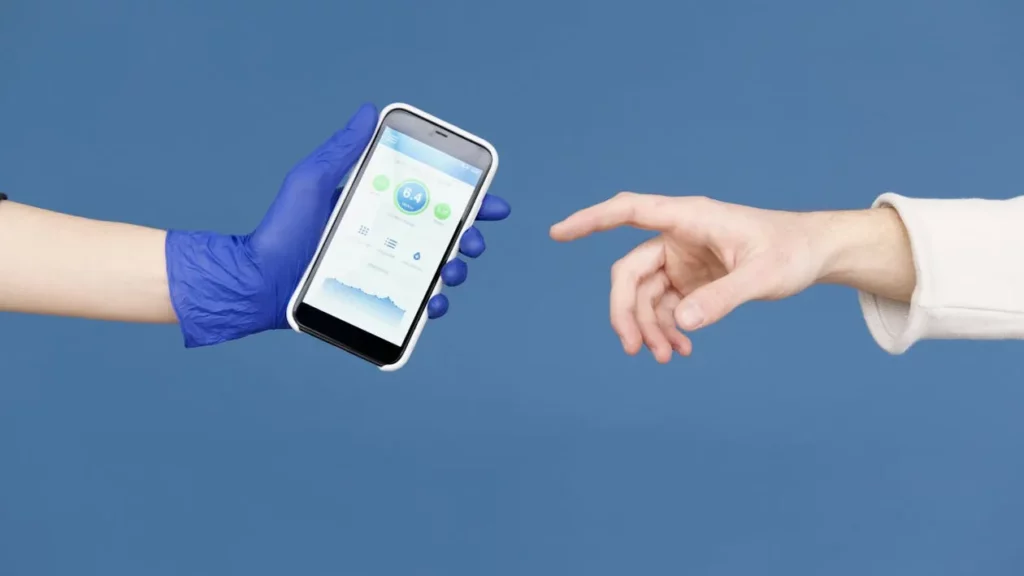
For healthcare startups, mobile app development for healthcare is not just a trend but a strategic necessity. Successful apps can improve patient engagement, streamline clinical workflows, and even save costs for health systems. For example, the NHS App in England (the UK’s national health service application) reached over 34 million registered users by early 2024 – about three-quarters of all adults in England. This app allows patients to book appointments, access records, and receive messages, leading to a 69% yearly increase in logins and over 31.5 million monthly logins by March 2024. Likewise, telehealth platforms such as Teladoc Health serve 50+ million members and facilitate over 10 million virtual visits annually, demonstrating the massive demand for remote care via mobile apps.
These examples underscore the opportunity in mobile app development for healthcare, but building a successful healthcare app requires understanding certain key features, challenges, and best practices. The sections below explore what healthcare startups need to know in 2025 and beyond.
Mobile App Development Firms for Healthcare
Healthcare mobile application development companies have seen the increase in demand for healthcare mobile applications and hence a certain amount of proliferation has taken place. Of all these companies, none finds mentions more than Designveloper, as one of the best healthcare startup solutions providers around.
Established in Vietnam, Designveloper has carved a niche in mobile app development for healthcare. We boast a team of experienced IT talents who always bring top notch software solutions. ODC is one of our Flagship projects which shows our expertise. ODC is a comprehensive platform that allows patient-doctor interactions, help for patients’ registration and appointments scheduling, ordering prescriptions and performing medical examinations or any other interaction that a doctor may need with the patients. In addition, for healthcare providers, ODC provides ways of making handling of paperwork, prescriptions, appointments, and finances easier hence improving the operational efficiency.
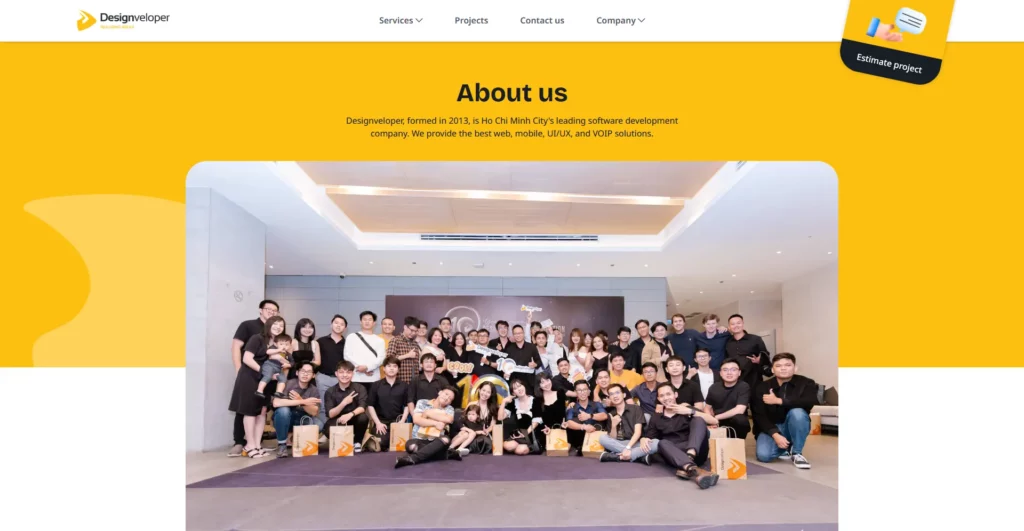
Beyond Designveloper, several other firms have made significant contributions to mobile app development for healthcare:
- ScienceSoft: With a track record since 2005, ScienceSoft offers end-to-end mobile application development services tailored for medical care, ensuring project success across various healthcare domains.
- Appinventiv: Known for building secure and scalable health tech solutions, Appinventiv specializes in creating robust electronic health record (EHR) systems and patient engagement platforms.
- Arkenea: With over 13 years of exclusive focus on healthcare, Arkenea specializes in developing HIPAA-compliant mobile apps that empower patients and streamline healthcare operations.
Key Features of Healthcare Mobile Apps
Any effective healthcare mobile app must deliver specific core features that address both patient and provider needs. Mobile app development for healthcare should focus on features that improve access, communication, and care quality. Key features commonly found in successful healthcare apps include:
User-Friendly Interface
The app should be easy to navigate and understand for users of all ages and tech backgrounds. Clear menus, readable text, and simple workflows are critical. Patients and clinicians will quickly abandon an app that is confusing or unintuitive. A clean, accessible UI/UX design builds trust and encourages regular use.
Secure Data Management
Being concerned with sensitive health data, system security measures should be robust. One should encrypt personal health information, and users must authenticate themselves (for example, through biometrics), and there should be limits to access. The patient data should be stored and transmitted in a manner that is compliant with healthcare privacy laws such as HIPAA in the US and GDPR in Europe. For example, healthcare apps must have rules for protecting privileged access to the app and encryption of data in transit and at rest. Data privacy, while as a matter of ethics, is also mandatory by law in healthcare.
Integration with EHR Systems
A standout feature of many healthcare apps is the ability to connect with electronic health record (EHR) systems and other medical databases. Interoperability allows patient information (lab results, medical history, etc.) to flow between the app and hospital/clinic systems in real time. For example, a patient-facing app might pull the latest test results from the doctor’s EHR or push patient-reported data (like daily blood pressure readings) into the medical record. Using standardized health data protocols such as HL7/FHIR enables seamless data exchange between new apps and legacy systems. This integration is essential for giving providers a comprehensive view and avoiding information silos.
Telemedicine and Communication Tools
Telehealth features have become an important part of the healthcare apps since the COVID 19 pandemic. Telemedicine now embedded in many apps quite literally enables people to video conference, have a secure message, remote consult with a physician. These features convert the smartphone into a virtual clinic, where patients can receive medical advice or therapy without leaving home. On-demand doctor visits, virtual follow-ups, as well as AI symptom checks can all be available via a telemedicine app. For example, apps like Teladoc and Amwell enable consumers to consult qualified doctors through video and receive digital prescriptions. By the same token, this provides easier access to patients living in remote areas relieving the physical facilities burden.
Remote Monitoring & Wearable Integration
Today, healthcare apps are also supporting remote patient monitoring aimed at chronic conditions. They can also connect with wearable devices or IoT health gadgets (smart glucose monitors, fitness bands, blood pressure cuffs, etc.) to get the real time health data. Providers can see if a patient is eating regularly, when they are falling asleep and what vitals (heart rate, blood sugar, oxygen levels) they are tracking via the app and notice any worrying trends. Say a patient uses a cardiac rehab app that communicates with your patient’s smartwatch, monitoring heart rate during exercise, and raising flags to clinicians. Features of remote monitoring allow patients to take control of managing their health on a daily basis and doctors to obtain data on a continuous basis instead of during clinic visits.
Appointment and Prescription Management
A handy healthcare app should allow the user to schedule appointments, receive reminders and perform optically prescriptions. Patients can find slots available with their doctor, book or cancel visits and receive automated reminder notifications using the built‐in appointment booking systems. It offers prescription management features such as allowing patients to request medication refills, view their medication list, and their dosage instructions. Apps integrate some with pharmacy systems to give you notification of home delivery or pickup. This saves patient time and minimizes no shows or missed medications.
Health Tracking and Educational Content
Personal health tracking dashboards are present in a vast majority of healthcare mobile apps. For example, an app may let users enter log symptoms, mood, diet or exercise and review trends or transfer the same data to their provider. With tracking comes the added value, as apps usually provide the educational resources – the articles, FAQs, or even AI chatbots – to explain the users’ condition and give tips on how to live healthy. The feature rest keeps the patients engaged and informed. For instance, a diabetes management app offers tips and nutrition guidance as well as a blood sugar reading log for the patient and serves as an app that guides a patient, or a digital coach.
Notifications and Alerts
Push notifications are also another key feature in healthcare apps, they ensure that users receive timely notifications on their apps. This can be in the form of medication reminders (“It’s time to take 5 mg of X”), appointment alerts (“A virtual visit in 1 hour”) or just general health reminders (“Don’t forget to log your meals today”). Alerts can also be important, especially if via a care team, when a monitored metric is out of safe range.
Depending on its goal, every healthcare app will put a different combination of features as a priority – for instance, a mental health app will center around teletherapy and mood tracking, whereas a hospital’s app will focus on accessing records and billing. However, the best mobile app development for healthcare always centers on usability, security, and connectivity. Nevertheless, when the above features are included, healthcare startups can develop apps which improve patient care and make the provider’s workflow easy.
Challenges in Mobile App Development for Healthcare
Developing a healthcare mobile app in 2025 is a challenging task and requires adopting some strategies. The medical domain is complex and highly regulated, so mobile app development for healthcare is often more demanding than other industries. The following challenges and obstacles are some of those major ones that the developers face.
Data Privacy and Security Compliance
Perhaps the biggest challenge is handling sensitive health data securely and legally. Healthcare apps must comply with strict privacy regulations (like HIPAA, HITECH, GDPR) and protect electronic protected health information (ePHI) at all times. Any security lapse can be catastrophic – not only eroding user trust but also incurring heavy legal penalties.
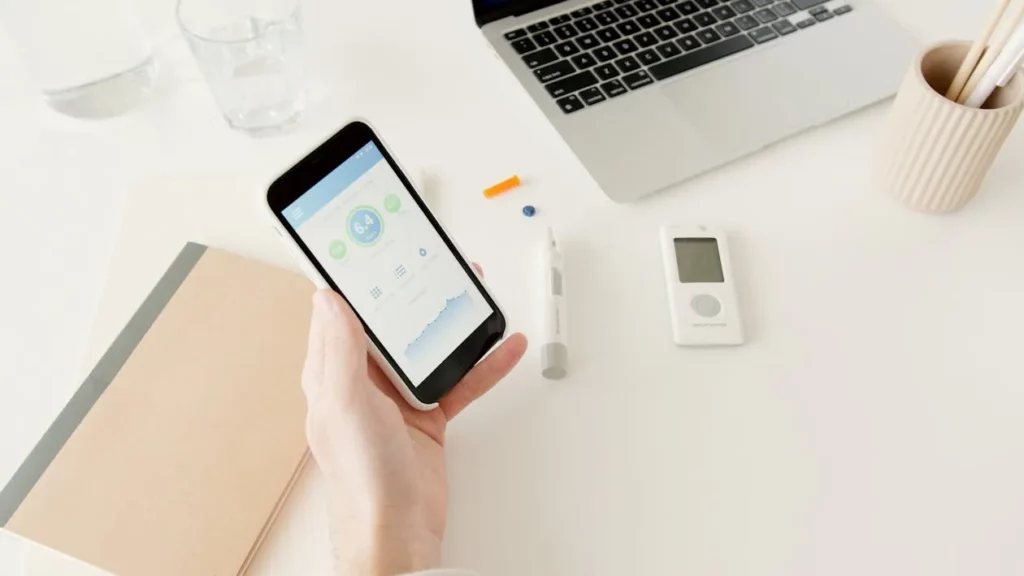
Unfortunately, many existing health apps have fallen short on this front. A study published in BMJ found that only 47% of mobile health apps’ data transmissions complied with the app’s own privacy policies, and 28% of apps lacked a privacy policy entirely. This highlights how common privacy gaps are. Startups must dedicate significant effort to encryption, secure code practices, and regular security audits to ensure patient data stays confidential. They also need to implement features like user consent forms and anonymization where possible. The cost of a breach in healthcare is extremely high – the average healthcare data breach cost was about $9.8 million in 2024, the highest of any industry. Thus, robust security isn’t optional; it’s absolutely essential.
Regulatory Compliance and Approvals
Apart from privacy laws, there might be such regulations for healthcare apps. There may be a need to obtain FDA or equivalent clearance for an app that offers health monitoring or clinical decision support, if, for example, it is a medical device or prescription for treatment. It itself is a challenge to keep up with evolving healthcare regulations. Rules can vary from year to year to make the sport safer and more effective, and in most cases, startups have to react fast. Properly planning for compliance is essential during development of digital therapeutics, including if clinical trials are needed. It can be overwhelming for newbies to even go around this regulatory maze.
In general, it is important to make compliance a part of the app from day one to not have to incur the costly reworks or legal ramifications on later. For example, many health apps rely on a dedicated compliance officer or advisor to watch what regulations are taking place and give guidance on development.
Integration and Interoperability Issues
Another major technical challenge is to achieve interoperability with existing healthcare systems. There is plenty of legacy software being used in hospitals and clinics (such as EHR and laboratory systems, billing systems), and a new app will have to integrate seamlessly with these legacy software. This is simply easier said than done. The data formats and standards can vary; one may connect using HL7 v2 messages, a different one will need to talk to a FHIR API, and other providers could have older and legacy custom databases. Because systems are not standardized, and further, fragmented, significant integration hurdles arise. Perhaps developers have data exchange, mapping, and synchronization in between disparate sources to manage.
Take syncing an app with multiple EHR brands (Epic, Cerner, etc) as an example, it means working with multiple APIs and data schemas. The integration work tends to take up a significant amount of development time in healthcare projects. As a result, knowing what goes on in clinical workflows is necessary: providers need to be able to easily integrate the app into their workflows or they will not adopt it. For that reason, healthcare startups have a dual issue of technical connectivity and workflow alignment. Common standards such as FHIR help with this, which “is an international interoperability standard that provides a consistent way to exchange electronic healthcare information and therefore enables e.g. handling and sharing of patient data between different hospital IT systems”. However, there’s still a long way to go to achieve true interoperability, and it is still an issue for app developers in the health care world.
User Engagement and Adoption
Simply building a feature-rich app does not guarantee that patients or doctors will use it consistently. Driving user engagement in healthcare can be challenging, especially given the diverse user base (from tech-savvy young adults to elderly patients who may be less comfortable with smartphones). If the app’s design is not intuitive or if it doesn’t clearly demonstrate value, users will drop off. In fact, retention statistics for health apps are sobering: one analysis found the 30-day retention rate for health & fitness apps can be as low as 3–8%. This means the majority of users stop using a new health app within a month of download. Low engagement can result from poor user experience, lack of perceived benefit, or simply user forgetfulness. Poor interface design leads to unsatisfied patient experience and low engagement.
Healthcare startups need to invest heavily in user-centric design and testing to ensure the app is easy, helpful, and even motivating to use. They must also consider factors like literacy levels, disabilities (adding features for the visually/hearing impaired), and language localization to make the app accessible to a broad population. Another adoption challenge is building trust – patients need confidence that the app’s information is accurate and that their data is safe. Overcoming skepticism, especially among older patients or clinicians wary of new tech, requires demonstrating reliability and efficacy (for example, via case studies, endorsements from medical professionals, or integrations with providers they trust).
Data Management and Accuracy
Healthcare apps often deal with large volumes of data – from electronic health records, wearable sensors, user inputs, to possibly external medical databases. Managing this big data and ensuring its accuracy is a significant challenge. Patient data may be spread across multiple sources that need to be aggregated and cleaned. For instance, a chronic disease management app might pull data from a patient’s fitness tracker, glucometer, and manual symptom logs while also referencing their clinic records. Consolidating all that into a coherent picture can be technically complex.
There is also the challenge of data quality: incorrect or inconsistent data can lead to poor decisions or user frustration. Developers must implement validation checks, error handling for device readings, and perhaps manual review processes for critical data. Additionally, apps utilizing algorithms or AI (e.g., for predicting health events or recommending treatments) have to be carefully trained and validated with quality datasets. Accessing high-quality medical data for AI training can be difficult due to privacy restrictions. Startups need to find creative solutions, like federated learning or synthetic data, to build smart features without violating privacy. Overall, handling data securely, accurately, and meaningfully (turning raw data into useful insights) is a core challenge in healthcare app development.
Monetization and Sustainability
Unlike general consumer apps, monetization in healthcare isn’t straightforward. Many healthcare apps are offered free of charge or at very low cost to patients, and providers or insurers often foot the bill indirectly. Startups must figure out a sustainable business model: Will the app be paid for by healthcare providers as a tool to improve their services? Will insurers reimburse its use as part of telehealth coverage? Or is there a premium feature set that certain users will pay for (freemium model)? Users themselves tend to expect free or very cheap apps for health services, and they may be reluctant to pay out-of-pocket without clear immediate value.
Charging patients for critical features (like asking a doctor or accessing personalized advice) can backfire if they are unsure of the benefit. This creates a dilemma for startups on how to generate revenue while still reaching a broad user base. Some have found success partnering with employers or insurance companies who pay on users’ behalf (for wellness apps, mental health coaching, etc.), while others implement a tiered model where basic functions are free but advanced ones require subscription. There is no one-size-fits-all solution, but lack of a clear payment model is indeed a challenge that can hinder an otherwise great app’s viability.
High Competition and Retention
The flip side of the booming mHealth market is that it’s very crowded. With tens of thousands of healthcare apps on app stores, a new startup app must provide unique value to stand out. It’s common for users to download an app, use it once or twice, and then abandon it if it doesn’t immediately impress. Competition includes not just other startups but also big tech companies and healthcare providers releasing their own apps. This environment means developers need a strong go-to-market strategy and possibly partnerships (with hospitals, clinics, or patient communities) to gain traction. Retaining users long-term requires continual updates, improvements, and engagement strategies (like personalized content, push notifications, or loyalty programs) to keep the app relevant in users’ lives.
In summary, mobile app development for healthcare comes with challenges ranging from strict compliance and integration hurdles to user engagement and business strategy issues. Healthcare startups must be prepared to address each of these challenges through careful planning, sufficient expertise (or consulting experts), and a user-focused approach. While the hurdles are significant, they are not insurmountable – and overcoming them can lead to a highly impactful product that improves healthcare delivery.
Best Practices for Building Healthcare Apps
Given the stakes and challenges in healthcare, it’s crucial for startups to follow best practices when developing a mobile health application. By learning from successful projects and industry guidelines, a team can increase the chances that their mobile app development for healthcare will result in a secure, effective, and user-friendly product. Here are some best practices to consider:
Prioritize Security and Privacy from Day One
Security cannot be an afterthought in healthcare apps – it must be engineered into the app from the ground up. Developers should implement strict security measures such as end-to-end encryption, secure user authentication (multi-factor login, biometric IDs), and regular penetration testing. All sensitive data should be encrypted both in transit and at rest using industry-standard algorithms. Protecting user privacy also means adhering to regulations like HIPAA, GDPR, and other local health data laws. It’s a best practice to conduct privacy impact assessments during development and ensure the app only collects the minimum necessary data. Establish protocols for data breach response and keep audit logs of data access. By baking in security and compliance early, startups avoid costly reworks and build trust with users. As a rule of thumb, treat patient data with the same care as one would treat a patient in person – with confidentiality and respect.
Ensure Regulatory Compliance and Quality
Alongside technical security, teams must stay on top of the healthcare regulatory environment. Engage legal or compliance experts to verify that your app meets all applicable healthcare standards. This may include implementing proper consent forms, disclaimers, and following guidelines from authorities (for example, FDA’s guidance on mobile medical apps if relevant). If the app provides any sort of diagnosis, treatment advice, or device-like functionality, plan for the certification/approval process early, as it can take time.
Additionally, ensure high quality and safety through rigorous testing. It’s wise to conduct beta tests or pilot programs in a controlled healthcare setting to catch any issues. Some best practices include following clinical validation procedures for any health algorithms and getting feedback from medical professionals on the app’s content accuracy. Compliance is not only about avoiding penalties; it’s about delivering a safe and effective tool for users. A culture of quality (e.g., using ISO standards for software development in healthcare) will serve a startup well in the long run.
Focus on User-Centered Design and Accessibility
A healthcare app should be designed with its end-users in mind at every step. User experience (UX) is a critical success factor – if an app is cumbersome, patients and clinicians simply won’t use it regularly. Best practices here include conducting user research with the target audience (patients, doctors, nurses, etc.) to understand their needs and tech comfort levels. Keep the interface simple and intuitive: as experts note, features should be clearly labeled and accessible in as few taps as possible. Use large, readable fonts and high-contrast designs suitable for users with low vision or older eyes.
It’s important to implement accessibility features: for example, ensure compatibility with screen readers for blind users, provide captions on videos for the hard of hearing, and support multiple languages if targeting diverse populations. Also, consider the context – a doctor may use the app in a busy clinic (so it should be efficient and maybe hands-free capable), whereas a patient might use it when sick or anxious (so it should be calming and easy). Continuous user testing is key: gather feedback via surveys or analytics to see where users struggle, and refine the design accordingly. By making the app truly user-friendly, a startup can improve patient engagement and satisfaction significantly.
Embrace Interoperability and Standards
To maximize an app’s utility in the healthcare ecosystem, design it to integrate smoothly with other systems. This means using established healthcare data standards and protocols. Best practice is to build APIs or interfaces that conform to standards like FHIR (Fast Healthcare Interoperability Resources) and HL7 for data exchange. Interoperability is “super essential” in healthcare apps because it enables easy data sharing between different providers and platforms. For example, if a patient switches doctors, their app data should be portable or shareable. Use of standards also future-proofs the app as the industry coalesces around common frameworks.
Additionally, consider integrating with popular health platforms or devices via their APIs – for instance, Apple HealthKit, Google Fit, or Fitbit’s API – so that users can import or export health data seamlessly. Ensuring interoperability may require extra upfront development, but it greatly enhances the app’s value proposition. It allows your solution to plug into hospital IT systems, which can be a selling point when partnering with healthcare organizations. In practice, this might mean your app can populate a patient’s record in an EHR with data they entered at home, or pull prescription data from a pharmacy system. Startups should also keep an eye on emerging interoperability initiatives and participate in relevant industry groups to stay updated.
Collaborate with Healthcare Professionals and Stakeholders
Building a healthcare app in isolation from the healthcare community is a recipe for missteps. It’s considered a best practice to involve doctors, nurses, and other healthcare professionals in the development process early and often. Their insights help ensure the app actually addresses real-world pain points and fits clinical workflows. Many successful healthcare startups establish a medical advisory board or conduct design workshops with clinicians. Likewise, engaging patients (or patient advocacy groups) can provide perspective on what features and language resonate best with end-users. This collaboration extends to testing: try piloting the app in a clinic or with a small group of patients to gather qualitative feedback.

Moreover, working closely with stakeholders can aid in compliance (they can alert you to any red flags in the workflow) and integration (they can help coordinate with hospital IT for data integration). Another stakeholder group is payers (insurance companies); if the app’s value proposition involves cost savings or preventive care, having data to show insurers or employers can bolster your case for adoption. In short, healthcare is a team sport – by collaborating, you ensure your app is grounded in medical reality and has champions who will advocate for its use.
Iterative Development and Thorough Testing
In the dynamic field of digital health, it’s wise to use an agile, iterative development approach. Release early prototypes, test them, and iterate based on user feedback. This allows you to catch issues and refine features before a wide launch. Continuous testing is especially vital in healthcare: apart from general app bugs, you need to test edge cases that could have serious implications (e.g., what if an alert fails to send? what if two readings conflict?). Implement a comprehensive QA process including unit tests, integration tests, and user acceptance tests with actual healthcare scenarios. Simulate high loads and real-life conditions (like poor network during a telemedicine call) to ensure the app remains stable. Performance optimization is also important; a laggy or crashing app could literally endanger patient care if a telehealth session drops unexpectedly.
Additionally, plan for ongoing maintenance – healthcare apps require updates for OS changes, security patches, and to meet new regulatory requirements regularly. Set up a schedule for periodic reviews and improvements. By treating the launch not as an end point but as the beginning of an app’s life, you can continually adapt and improve your product to meet users’ needs and remain compliant with the latest standards.
Innovate Carefully with Emerging Technologies
Technologies like artificial intelligence (AI), machine learning, and the Internet of Medical Things (IoMT) offer exciting possibilities for healthcare apps (such as predictive analytics, AI chatbots for triage, smart device integrations, etc.). Startups should certainly explore these innovations, but with caution and responsibility. Any AI used in a healthcare app should be thoroughly validated for accuracy and bias, as mistakes can have real health consequences. It’s a best practice to be transparent about AI roles – for example, clearly inform users if an answer is coming from an AI assistant versus a human doctor. Similarly, if integrating wearable devices or sensors, ensure they are FDA-approved or clinically validated if they are informing medical decisions. Keep user data from these devices secure, and give users control over what data they share.
Essentially, leverage new tech to enhance the app’s capabilities (such as using machine learning to personalize health tips), but always uphold medical reliability and privacy. When done right, these innovations can set your app apart – for instance, some apps now use AI to analyze patient symptoms and suggest possible conditions (with appropriate disclaimers), providing quicker guidance while the patient waits to see a doctor. Others use IoMT to automatically alert physicians if a patient’s device detects an anomaly (like an arrhythmia). Embracing such tech can greatly increase an app’s impact, so long as it’s integrated in a user-centric and compliant manner.
Conclusion
Mobile app development for healthcare offers tremendous potential to enhance patient care, improve health outcomes, and streamline medical workflows. As of 2024–2025, we see a world where digital health apps are widely used by both patients and providers, and this trend is only growing. Healthcare startups entering this space should be encouraged by the booming demand – global usage of health apps is at an all-time high, and innovations like telemedicine and remote monitoring are becoming standard practice. At the same time, they must approach development with a deep awareness of the domain’s challenges and responsibilities.
In summary, a healthcare mobile app must combine the right features (from secure data management and telehealth tools to integration with health records) with robust handling of challenges (privacy, compliance, interoperability, user engagement). Adhering to industry best practices – such as prioritizing security, designing for users, and collaborating with healthcare stakeholders – will greatly increase the likelihood of success. Startups that navigate this complex landscape thoughtfully can create solutions that patients trust and providers embrace.
The future of healthcare is increasingly digital. Apps are empowering patients to take charge of their health and enabling doctors to deliver care in new, efficient ways. However, trust and usability are the currency of this new digital health era. A well-executed mobile app can become an indispensable tool in a healthcare system, as seen with large-scale successes like the NHS App’s widespread adoption. By knowing the key things outlined above, healthcare startups in 2025 and beyond can build apps that stand out in a crowded market and truly make a difference in people’s lives. The journey of mobile app development for healthcare is challenging, but with the right approach, it leads to innovations that benefit everyone – patients, providers, and the healthcare industry at large.














